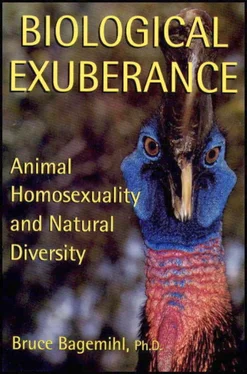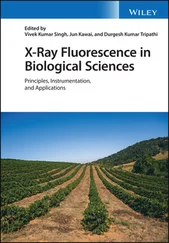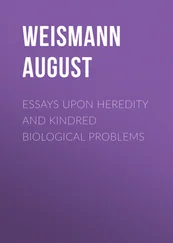Some Inuit peoples share with Native American tribes the belief that Bears—in this case, Polar Bears—manifest qualities of gender mixing and left-handedness. 40In Siberian cultures, however, the association of Bears with sexual and gender variability is most notable in the activities generally known as Bear ceremonialism. A pan-Siberian religious complex, Bear ceremonialism involves the ritual killing of a Bear, whose skin and head are then placed on a sacred platform and feted for many days. Among the Ob-Ugrian peoples, these carnivalesque ceremonies involve feasting, dancing, the singing of sacred epics, and the performing of satirical plays. The latter typically include bawdy displays of transvestism: all female roles are played by men, who often simulate sex acts with one another. In ecstatic ritual dances men may also remove each other’s clothes. During Nivkh (Gilyak) Bear festivals, male hunters wearing articles of female clothing (and men’s clothing backwards) try to grab a Bear from behind or kiss it. This highlights a fundamental aspect of Siberian Bear ceremonialism: transgressions of gender and sexual boundaries are simply one of many ritual “reversals” that occur during the festivities (others include saying the opposite of what one means, and the breaching of various other social prohibitions). Bear ceremonies thereby serve, in the words of one anthropologist, as a “liminal (mediating) period of ritual excess,” believed by these Siberian peoples to be essential for both human and animal fecundity and prosperity. 41
A cloak belonging to the Inuit shaman Qingailisaq. Just below each shoulder is the image of a
Pukiq , a mythical transgendered Caribou that combines and transforms elements of male and female, animal and human.

Dramatic performances of gender reversals and sexual ambiguity are also an integral component of the elaborate animal renewal and fertility ceremonies of the Yup’ik (Alaskan Eskimo) people. Such festivals feature “male mothers,” hermaphrodite and androgynous spirits, ritual transvestism, and cross-gender impersonation of animals, among other elements. 42One of the most important ceremonies is Nakaciuq or the Bladder Festival, a ten-day winter-solstice feast in which seals and other sea mammals are honored and invited to return for the next year (so named because the animals’ souls are believed to reside in their bladders, which are inflated and displayed during the ceremony). Another important ceremony is Kelek or the Masquerade, part of a larger festal cycle in which shamans and others interact with and appease the spirits of game animals. Images of male motherhood, pregnancy, and birth abound during these ceremonies. At the beginning of the Bladder Festival, for example, two men (often shamans) are designated “mothers” and pretend to be married to each other, with a third man playing the part of their “child.” In the Masquerade, male participants occasionally enact the part of a nursing woman, wearing a female mask and two wooden breasts carved with nipples. Male shamans dressed in women’s clothing also undertake trance journeys to visit animal spirits, symbolically give birth to spirit beings, and observe rituals associated with menstruation and childbirth following their spirit encounters. At the climax of this festival, a young boy dressed in women’s clothes acts as a ceremonial staff-carrier. Transvestism occurs in other Yup’ik festivities as well, involving both men and women disguising themselves as the opposite sex or two men dressing as bride and groom and pretending to get married. Men also sometimes wear articles of women’s clothing for luck when hunting land mammals.
The Tuunraat or spirit helpers visited by shamans—including the powerful guardians of game animals—are often considered to be hermaphrodite beings. During the Masquerade festival they are impersonated by men wearing masks that meld elements of male-female and animal-human. One such mask, for example, combines a downturned mouth—a standard female symbol in Yup’ik art—with labrets at both corners of the mouth (ornaments worn in lower lip piercings by men), symbolic of a male Walrus’s tusks. A stylized sea-mammal tail for a nose and other animal imagery also adorn the mask. Masks of androgynous spirits such as Qaariitaaq —represented as a sort of “bearded woman”—are used in the Bladder Festival as well. Animal dances, in which people impersonate various creatures using realistic movements, sounds, and costumes, are also a central aspect of the Yup’ik ceremonial cycle. Most notable of these are a dance in which a man portrays a mother eider duck, wearing a birdlike hunting helmet decorated with female phallic symbols (two young boys play “her” ducklings), and another in which two men impersonating a loon and a murre also wear these gender-mixing helmets as they dance side by side. As in Siberian Bear ceremonialism, all of these activities are part of an overall pattern of reversals and traversals characteristic of Yup’ik fertility ceremonies. Ordinary activities are turned upside down and the boundaries between “opposite” worlds are rendered fluid (e.g., participants walk backwards, invert traditional hospitality rituals, go nude or wear clothing inside out, etc.). In Yup’ik cosmology these sacred inversions are believed to remake, renew, and regenerate the natural world, ultimately insuring a harmonious relationship between humans and animals.
Although Siberian/Arctic peoples do not appear to accord special meaning to intersexuality among domesticated animals (as in some Native American and New Guinean cultures), nonbreeding animals do feature prominently in some Siberian animal husbandry practices. The Chukchi, for example, believe that castrated and nonreproductive animals insure the success of their domesticated Reindeer herds. The largest bucks are always gelded and, along with several “barren” does, allowed to fatten rather than being slaughtered. Castration is often accomplished by the herdsman biting directly through the animal’s spermatic ducts or tubules. These “eunuchoid” Reindeer (both male and female) are highly prized, as they are considered essential for the prosperity of the entire herd. Likewise, the Sakha (Yakut) people always donate one mare from their large herds of domesticated Horses to a shaman. This animal is not permitted to breed during its life, and it becomes an embodiment of the cosmic life force and a symbol of fertility for the tribe as a whole. 43
Despite wide differences in cultural contexts and details, there are a number of remarkable correspondences and continuities between native North America, Melanesia, and Siberia in their perception of alternative systems of gender and sexuality in animals. In numerous indigenous cultures widely separated in space and time, we find recurring variations on five central themes: Animals are totemically or symbolically associated with homosexuality and transgender, often in a shamanic context. Powerful gender-mixing creatures such as the Bear, cassowary, and Caribou/Reindeer occupy a central position in tribal cosmologies and worldviews. Ritual enactments of animal homosexuality and transgender are commonplace and are often directly associated with notions of fertility, growth, or life essence; this is sometimes concretized in the image of a “male mother” figure and may also be part of a larger pattern of sacred reversals or inversions. Among domesticated creatures, hermaphrodite and nonbreeding animals are cultivated and highly valued. And finally, both animals and people that combine aspects of maleness and femaleness or exhibit sexual variation are consistently honored and ceremonialized, and an essential continuity is recognized between homosexuality/transgender in both human and nonhuman creatures. While fascinating in their own right, these cross-cultural parallels are perhaps even more significant in terms of their implications for contemporary scientific thought.
Читать дальше













